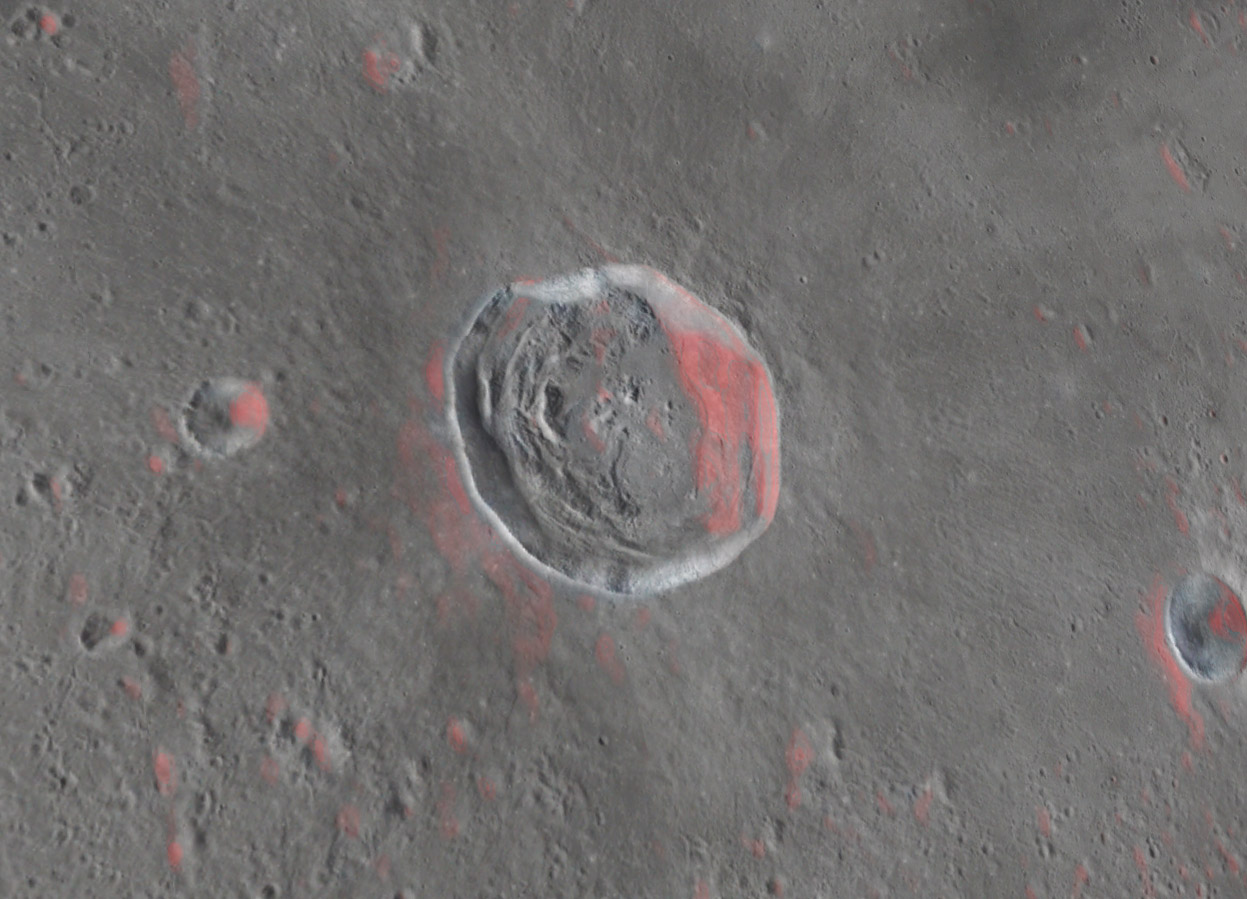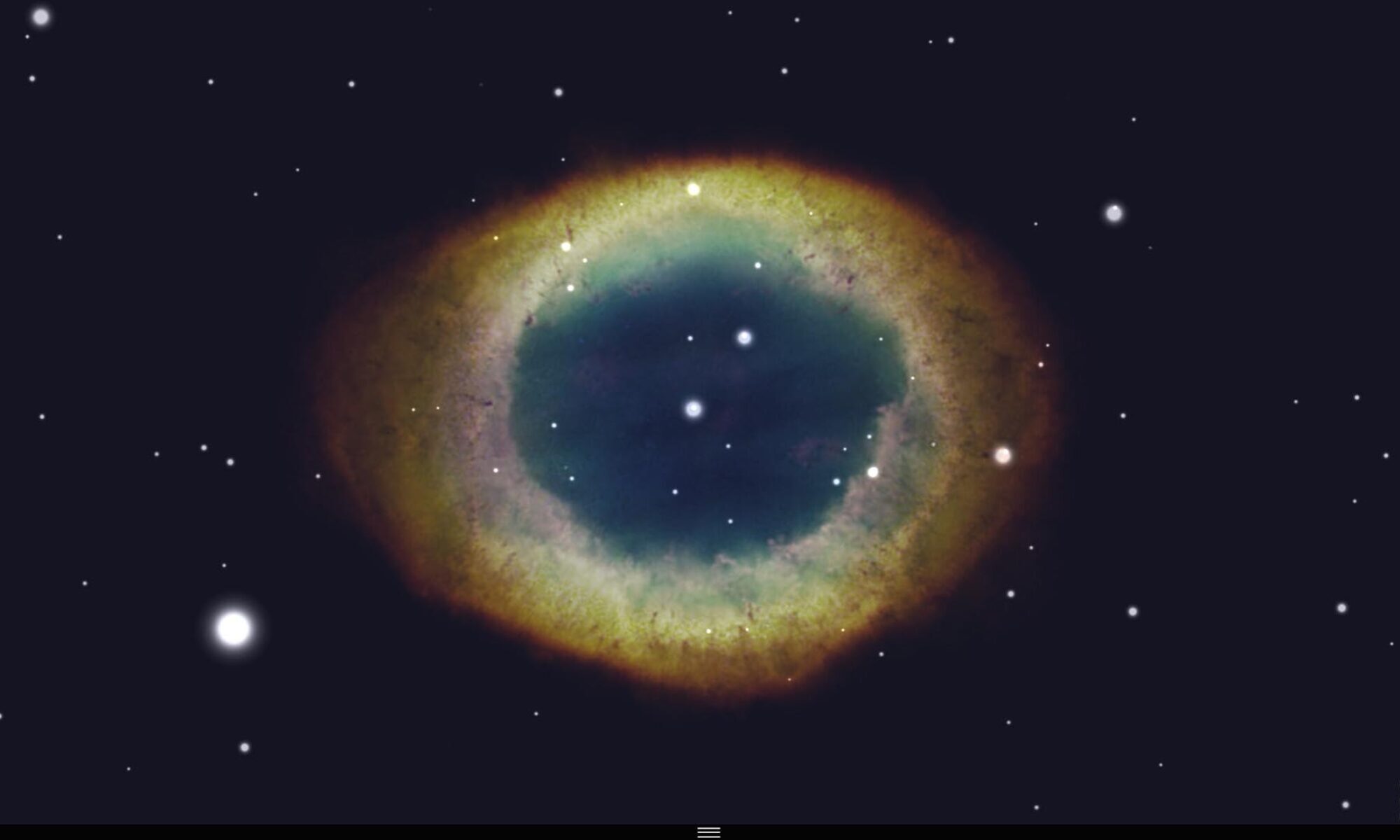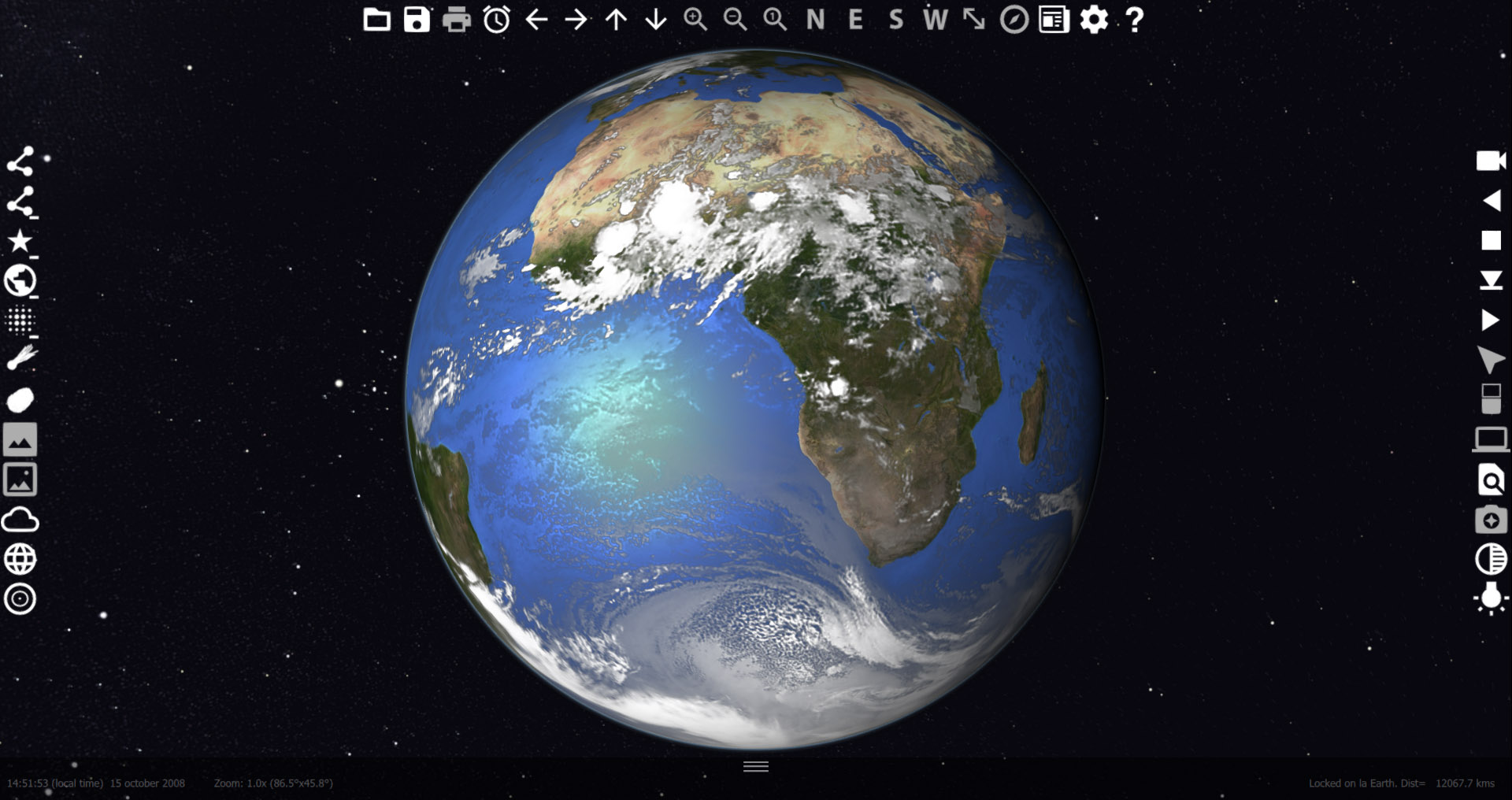After weeks of effort, a new version is now online, aiming to significantly improve the graphical quality of the program. The textures of the objects in the solar system have been updated, but it is especially the rendering of the Moon’s surface that has received special attention.
The images used to recreate the lunar surface come from the Lunar Reconnaissance Orbiter Camera (LROC), an instrument installed on the Lunar Reconnaissance Orbiter mission that has been mapping our satellite in high resolution since June 2009.
To create a 3D effect, I use the Parallax Occlusion Mapping technique, which allows for the simulation of cast shadows on the relief, depending on the position of the Sun and the observer. Thus, even though it currently only involves flat textures applied to a simple sphere, the result is often impressive and gives the impression of being able to walk between mountains and craters.

In a future version, the surfaces of several objects in the solar system will be truly recreated in 3D, but it will be necessary to have a sufficiently powerful configuration to take advantage of this feature (i.e., having a graphics card compatible with DirectX 11 or OpenGL 4.0 at a minimum, capable of applying hardware tessellation).
New details that were already present in version 2 are back with this revision 3.0.52, such as the reflection of the Sun on Earth’s oceans.
Finally, the program now displays the names of the main geological formations visible on the surface of planets and their satellites (as well as the capitals for Earth and the landing sites of the main space missions for other objects).
It’s up to you to try and find the Apollo mission landing sites!







